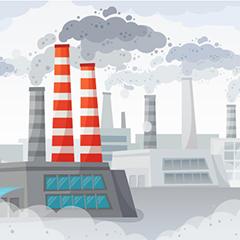Greenhouse Gases
Think about what would happen if you put salt in your cookie dough instead of sugar. Yuck! When you follow a recipe, you need to measure the right amount of ingredients to get the best results. It’s all about balance. In a similar way, the Earth maintains a balance of "ingredients" in the atmosphere. These ingredients are gases, such as nitrogen, oxygen, and carbon dioxide.
Some gases have the ability to trap the sun’s energy and warm the Earth. This helps balance the Earth’s temperature, keeping it stable over time. However, too few or too many of these gases in the atmosphere can mess up the balancing act. Human activities increase the amount of these gases, causing a “greenhouse effect” that makes the Earth’s temperature rise.
What are the greenhouse gases?
Carbon dioxide is the primary greenhouse gas. Other greenhouse gases include:
- Chlorofluorocarbons (CFCs)
- Methane
- Nitrous oxide
- Ozone
- Volatile organic compounds (VOCs)
What human activities increase greenhouse gases?
Activities that can increase greenhouse gases include:
- Deforestation (cutting down trees)
- Electricity production
- Farming (manure gases)
- Fossil fuel use (burning oil, coal, propane, diesel fuel, natural gas, and gasoline)
- Industrial processes
- Landfills
- Wastewater management
Some content courtesy of the National Library of Medicine.



